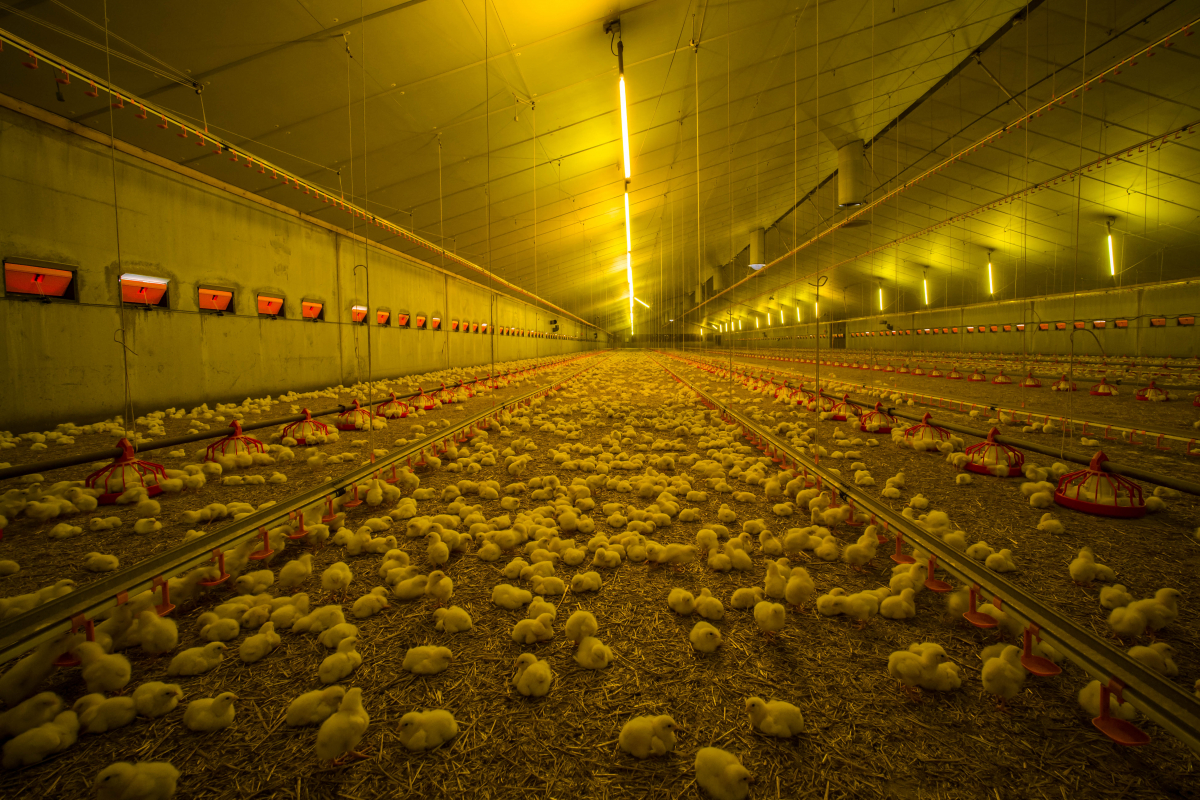
Broiler chickens are growing enormously fast... Within 6 weeks the production cycle is finished and they have to be ready to go to the slaughterhouse. This means also that farmers have to give their chicks the best possible care, especially in the beginning. They have to see problems at early stage and try to search for solutions as fast as they can.

GIVE YOUR CHICKS THE BEST POSSIBLE START
The first week, in particular the very first day of life, is crucial to ensure a good production cycle. When the one day old chicks arrive at the farm, they have had a stressful time and they have already utilized the biggest part of their reserves. Make sure that your poultry house is totally ready to receive the little chicks:
-
Ensure a safe and stable environment through an effective cleaning and disinfection during the sanitary stop. An one-day old chick has not yet established a strong gut flora and they will pick up all kinds of microorganisms from the environment.
-
Provide immediately access to the drinkers and feeders. One day old chicks have to drink and eat as fast as possible to restock their reserves and to become a strong broiler chick. Guarantee enough feed on the chick paper so they can find food easily the first days.
-
Make sure that there is a good climate in the poultry house. Check regularly the temperature and ventilation and ensure dry litter.
FOLLOW-UP YOUR FLOCK
To detect early problems, it is very important to follow-up your flock on daily base. In this way, you will be able to intervene at the right moment and to limit the damage in your poultry house. It is strongly recommended to do twice or at least once a day a check-up of your flock by going around in the building:
-
Take out death birds as quickly as possible to avoid disease transmission. Death birds are often an important source of infection for the rest of the flock...
-
Look closely to your animals and inspect also their droppings on abnormalities.
-
Check the bird distribution in general within the house to see if the temperature is right. If the temperature is too low, all birds will stick very closely together. Normally, with an optimal temperature, they are distributed in little groups of 20-30 animals. When the temperature is too high, they won’t flock together and they will often go and search for colder places next to the walls of the building.
-
Check also the bird distribution around the drinkers and feeders to find out if there are any problems such as blockages of the nipples or feeding pans.
-
Adapt the height of the drinking lines every day because the birds are growing fast. To ensure an optimal water intake they must be able to easily reach the drinking water.
-
Identify causes of death and ask your veterinarian to do some autopsies if necessary to detect any disease.
-
Set up together with your veterinarian an effective vaccination program, adapted to your farm.
Source: De Gussem M., van Middelkoop K., van Mullem K. and van ‘t Veer E., 2013. Broiler signals, a practical guide to broiler focused management. Roodbont Publishers B.V., Zutphen, The Netherlands.